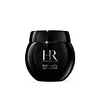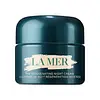What's inside
What's inside
 Key Ingredients
Key Ingredients

 Benefits
Benefits

 Concerns
Concerns

 Ingredients Side-by-side
Ingredients Side-by-side

Water
Skin ConditioningPropylene Glycol
HumectantDimethicone
EmollientHydroxypropyl Tetrahydropyrantriol
Skin ConditioningIsohexadecane
EmollientCyclohexasiloxane
EmollientGlycerin
HumectantSynthetic Wax
AbrasiveDimethicone/PEG-10/15 Crosspolymer
Aluminum Starch Octenylsuccinate
AbsorbentVaccinium Myrtillus Fruit Extract
Skin ConditioningSodium Hyaluronate
HumectantMagnesium Sulfate
Dipotassium Glycyrrhizate
HumectantDisodium EDTA
Lauryl PEG-9 Polydimethylsiloxyethyl Dimethicone
Skin ConditioningEthylhexyl Hydroxystearate
EmollientAcrylonitrile/Methyl Methacrylate/Vinylidene Chloride Copolymer
Phenoxyethanol
PreservativeCI 77163
Cosmetic ColorantParfum
MaskingWater, Propylene Glycol, Dimethicone, Hydroxypropyl Tetrahydropyrantriol, Isohexadecane, Cyclohexasiloxane, Glycerin, Synthetic Wax, Dimethicone/PEG-10/15 Crosspolymer, Aluminum Starch Octenylsuccinate, Vaccinium Myrtillus Fruit Extract, Sodium Hyaluronate, Magnesium Sulfate, Dipotassium Glycyrrhizate, Disodium EDTA, Lauryl PEG-9 Polydimethylsiloxyethyl Dimethicone, Ethylhexyl Hydroxystearate, Acrylonitrile/Methyl Methacrylate/Vinylidene Chloride Copolymer, Phenoxyethanol, CI 77163, Parfum
Water
Skin ConditioningAlgae Extract
EmollientButyrospermum Parkii Butter
Skin ConditioningDimethicone
EmollientButylene Glycol
HumectantCaprylic/Capric/Myristic/Stearic Triglyceride
EmollientPolyglyceryl-3 Methylglucose Distearate
EmulsifyingGlycerin
HumectantSilica
AbrasiveCoco-Caprylate/Caprate
EmollientSimmondsia Chinensis Seed Oil
EmollientMangifera Indica Seed Butter
Skin ConditioningPolyglyceryl-10 Pentastearate
Skin ConditioningGlyceryl Stearate
EmollientBehenyl Alcohol
EmollientPEG-100 Stearate
Dimethicone/Vinyl Dimethicone Crosspolymer
Skin ConditioningSesamum Indicum Seed Oil
EmollientMedicago Sativa Seed Powder
Skin ConditioningHelianthus Annuus Seedcake
AbrasivePrunus Amygdalus Dulcis Seed Meal
AbrasiveEucalyptus Globulus Leaf Oil
PerfumingSodium Gluconate
Skin ConditioningCopper Gluconate
Skin ConditioningCalcium Gluconate
HumectantMagnesium Gluconate
Skin ConditioningZinc Gluconate
Skin ConditioningTocopheryl Succinate
AntioxidantNiacin
SmoothingSesamum Indicum Seed Powder
Skin ConditioningPalmitoyl Tripeptide-1
Skin ConditioningPalmitoyl Tetrapeptide-7
Skin ConditioningPalmitoyl Hexapeptide-12
Skin ConditioningAcetyl Hexapeptide-8
HumectantSodium Hyaluronate
HumectantCrithmum Maritimum Extract
Skin ConditioningLaminaria Digitata Extract
Skin ProtectingYeast Extract
Skin ConditioningCrithmum Maritimum Callus Culture Filtrate
Skin ProtectingBambusa Vulgaris Extract
Skin ConditioningCitrus Aurantifolia Peel Extract
CleansingCoffea Arabica Seed Extract
MaskingPisum Sativum Extract
Skin ConditioningMagnesium Ascorbyl Phosphate
AntioxidantCaffeine
Skin ConditioningTocopherol
AntioxidantTocopheryl Acetate
AntioxidantLecithin
EmollientCaprylic/Capric Triglyceride
MaskingEthylhexylglycerin
Skin ConditioningPotassium Cetyl Phosphate
EmulsifyingHydroxyethyl Acrylate/Sodium Acryloyldimethyl Taurate Copolymer
Emulsion StabilisingPEG-8
HumectantAcrylates/C10-30 Alkyl Acrylate Crosspolymer
Emulsion StabilisingSodium Stearoyl Lactylate
EmulsifyingGlyceryl Polymethacrylate
Carbomer
Emulsion StabilisingSodium Hydroxide
BufferingPolysorbate 60
EmulsifyingGlucosamine Hcl
Sorbitan Isostearate
EmulsifyingPolysorbate 20
EmulsifyingHydrogenated Vegetable Oil
EmollientCaprylyl Glycol
EmollientHexylene Glycol
EmulsifyingAlcohol Denat.
AntimicrobialParfum
MaskingLimonene
PerfumingLinalool
PerfumingHydroxycitronellal
PerfumingCitronellol
PerfumingGeraniol
PerfumingBenzyl Salicylate
PerfumingBenzyl Benzoate
AntimicrobialBHT
AntioxidantDisodium EDTA
Phenoxyethanol
PreservativeChlorphenesin
AntimicrobialPotassium Sorbate
PreservativeCI 15985
Cosmetic ColorantWater, Algae Extract, Butyrospermum Parkii Butter, Dimethicone, Butylene Glycol, Caprylic/Capric/Myristic/Stearic Triglyceride, Polyglyceryl-3 Methylglucose Distearate, Glycerin, Silica, Coco-Caprylate/Caprate, Simmondsia Chinensis Seed Oil, Mangifera Indica Seed Butter, Polyglyceryl-10 Pentastearate, Glyceryl Stearate, Behenyl Alcohol, PEG-100 Stearate, Dimethicone/Vinyl Dimethicone Crosspolymer, Sesamum Indicum Seed Oil, Medicago Sativa Seed Powder, Helianthus Annuus Seedcake, Prunus Amygdalus Dulcis Seed Meal, Eucalyptus Globulus Leaf Oil, Sodium Gluconate, Copper Gluconate, Calcium Gluconate, Magnesium Gluconate, Zinc Gluconate, Tocopheryl Succinate, Niacin, Sesamum Indicum Seed Powder, Palmitoyl Tripeptide-1, Palmitoyl Tetrapeptide-7, Palmitoyl Hexapeptide-12, Acetyl Hexapeptide-8, Sodium Hyaluronate, Crithmum Maritimum Extract, Laminaria Digitata Extract, Yeast Extract, Crithmum Maritimum Callus Culture Filtrate, Bambusa Vulgaris Extract, Citrus Aurantifolia Peel Extract, Coffea Arabica Seed Extract, Pisum Sativum Extract, Magnesium Ascorbyl Phosphate, Caffeine, Tocopherol, Tocopheryl Acetate, Lecithin, Caprylic/Capric Triglyceride, Ethylhexylglycerin, Potassium Cetyl Phosphate, Hydroxyethyl Acrylate/Sodium Acryloyldimethyl Taurate Copolymer, PEG-8, Acrylates/C10-30 Alkyl Acrylate Crosspolymer, Sodium Stearoyl Lactylate, Glyceryl Polymethacrylate, Carbomer, Sodium Hydroxide, Polysorbate 60, Glucosamine Hcl, Sorbitan Isostearate, Polysorbate 20, Hydrogenated Vegetable Oil, Caprylyl Glycol, Hexylene Glycol, Alcohol Denat., Parfum, Limonene, Linalool, Hydroxycitronellal, Citronellol, Geraniol, Benzyl Salicylate, Benzyl Benzoate, BHT, Disodium EDTA, Phenoxyethanol, Chlorphenesin, Potassium Sorbate, CI 15985
Ingredients Explained
These ingredients are found in both products.
Ingredients higher up in an ingredient list are typically present in a larger amount.
Dimethicone is a type of synthetic silicone created from natural materials such as quartz.
What it does:
Dimethicone comes in different viscosities:
Depending on the viscosity, dimethicone has different properties.
Ingredients lists don't always show which type is used, so we recommend reaching out to the brand if you have questions about the viscosity.
This ingredient is unlikely to cause irritation because it does not get absorbed into skin. However, people with silicone allergies should be careful about using this ingredient.
Note: Dimethicone may contribute to pilling. This is because it is not oil or water soluble, so pilling may occur when layered with products. When mixed with heavy oils in a formula, the outcome is also quite greasy.
Learn more about DimethiconeDisodium EDTA plays a role in making products more stable by aiding other preservatives.
It is a chelating agent, meaning it neutralizes metal ions that may be found in a product.
Disodium EDTA is a salt of edetic acid and is found to be safe in cosmetic ingredients.
Learn more about Disodium EDTAGlycerin is already naturally found in your skin. It helps moisturize and protect your skin.
A study from 2016 found glycerin to be more effective as a humectant than AHAs and hyaluronic acid.
As a humectant, it helps the skin stay hydrated by pulling moisture to your skin. The low molecular weight of glycerin allows it to pull moisture into the deeper layers of your skin.
Hydrated skin improves your skin barrier; Your skin barrier helps protect against irritants and bacteria.
Glycerin has also been found to have antimicrobial and antiviral properties. Due to these properties, glycerin is often used in wound and burn treatments.
In cosmetics, glycerin is usually derived from plants such as soybean or palm. However, it can also be sourced from animals, such as tallow or animal fat.
This ingredient is organic, colorless, odorless, and non-toxic.
Glycerin is the name for this ingredient in American English. British English uses Glycerol/Glycerine.
Learn more about GlycerinParfum is a catch-all term for an ingredient or more that is used to give a scent to products.
Also called "fragrance", this ingredient can be a blend of hundreds of chemicals or plant oils. This means every product with "fragrance" or "parfum" in the ingredients list is a different mixture.
For instance, Habanolide is a proprietary trade name for a specific aroma chemical. When used as a fragrance ingredient in cosmetics, most aroma chemicals fall under the broad labeling category of “FRAGRANCE” or “PARFUM” according to EU and US regulations.
The term 'parfum' or 'fragrance' is not regulated in many countries. In many cases, it is up to the brand to define this term.
For instance, many brands choose to label themselves as "fragrance-free" because they are not using synthetic fragrances. However, their products may still contain ingredients such as essential oils that are considered a fragrance by INCI standards.
One example is Calendula flower extract. Calendula is an essential oil that still imparts a scent or 'fragrance'.
Depending on the blend, the ingredients in the mixture can cause allergies and sensitivities on the skin. Some ingredients that are known EU allergens include linalool and citronellol.
Parfum can also be used to mask or cover an unpleasant scent.
The bottom line is: not all fragrances/parfum/ingredients are created equally. If you are worried about fragrances, we recommend taking a closer look at an ingredient. And of course, we always recommend speaking with a professional.
Learn more about ParfumPhenoxyethanol is a preservative that has germicide, antimicrobial, and aromatic properties. Studies show that phenoxyethanol can prevent microbial growth. By itself, it has a scent that is similar to that of a rose.
It's often used in formulations along with Caprylyl Glycol to preserve the shelf life of products.
Sodium Hyaluronate is hyaluronic acid's salt form. It is commonly derived from the sodium salt of hyaluronic acid.
Like hyaluronic acid, it is great at holding water and acts as a humectant. This makes it a great skin hydrating ingredient.
Sodium Hyaluronate is naturally occurring in our bodies and is mostly found in eye fluid and joints.
These are some other common types of Hyaluronic Acid:
Learn more about Sodium HyaluronateWater. It's the most common cosmetic ingredient of all. You'll usually see it at the top of ingredient lists, meaning that it makes up the largest part of the product.
So why is it so popular? Water most often acts as a solvent - this means that it helps dissolve other ingredients into the formulation.
You'll also recognize water as that liquid we all need to stay alive. If you see this, drink a glass of water. Stay hydrated!
Learn more about Water